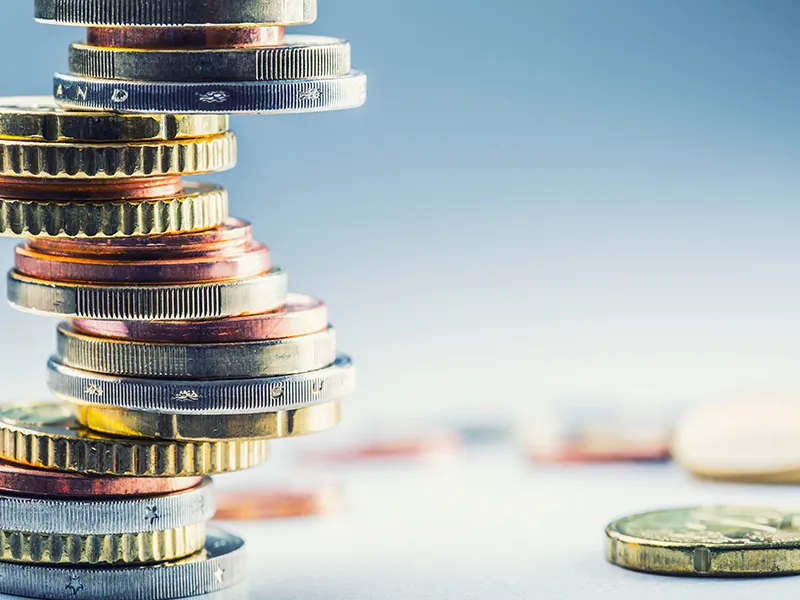
Treasury stocks are a part of issued stocks that a company repurchases from its shareholders. Also known as reacquired stocks, these stocks are retained by the company. It can also decide to issue them back to potential shareholders in the future or retire them from the market to permanently make them unavailable.
How do treasury stocks work?
The number of shares that a company can issue in the open market is known as outstanding shares. While some shares out of these can be traded publicly, some cannot be bought and sold publicly due to attached conditions.
Treasury stocks, too, are part of outstanding shares of a company and are initially held by investors, but these are later held back or repurchased by the company from its shareholders.
Treasury stocks or stocks that are bought back/ repurchased are used by a company’s management to reduce the total number of outstanding shares in the market. This is intended to benefit the company’ shareholders by allowing them relatively higher ownership. Here are some of the modes through which companies can buyback shares:
Direct purchase
In this method of buy back, the company buys shares straight from the exchange. With a buyback announcement, a company can expect its share prices to rise since investors generally view it positively. Upon a rise in the prices, the company can then repurchase the stocks through this mode, also known as open market operation.
Dutch auction
This method involves:
- announcement of buy back by the company,
- last date of buy back and
- approximate prices of shares likely to be offered by the company.
If an existing shareholder wishes to sell the shares to the company can communicate his/her interest by selecting a price from the price band offered by the company. Upon receipt of intimation from a shareholder and review of the same, the company purchases a specific quantity of shares as per lowest available price.
Tender offer
This mode of buyback involves offering a premium price for repurchasing shares from existing shareholders. Apart from disclosing the premium to current market price, the company also informs shareholders about the offer validity for them to sell shares if interested.
Did you know?
The year 2021 saw share buybacks climb up to new highs, with nearly 61 companies offering buy back worth Rs. 392.9 bn. Some of the top companies offering buy backs this year include Wipro and TCS.
How does repurchasing treasury stocks help companies?
Here are some of the benefits that a company can look forward to from treasury stock
To raise capital in future
Treasury stocks that are repurchased by a company can be used as a reserve for raising capital in the future when there is a requirement for funds. Apart from the fact that these shares can be reissued to shareholders in the future, they can also be used as a settlement for acquisition or merger in the future.
Reclaiming intrinsic value
During a highly volatile market condition, a company’s shares may not retain their intrinsic value. In such cases, treasury stocks can be bought back by the company to increase their prices and reclaim their intrinsic value. This is also considered as a positive move by remaining shareholders since they can fetch higher value from their shareholding.
Retiring of shares
Once treasury stocks are bought back by a company, these cannot be traded in the market.
Since the number of outstanding shares reduces, it impacts existing shareholder’s holdings and profit distribution through dividends.
Gaining back control
Just like the outstanding shares of a company reduce post buy back, it increases the percentage holding for existing shareholders. With a buy back, companies can avoid hostile takeovers, especially when the negotiations do not favour the company and its present shareholders.
Positive impact on financials
Treasury stocks help in improving the company’s financials. Since these shares are permanently taken off the market, remaining shareholders or investors can see a rise in some of the financial ratios, especially those pertaining to returns.
What are the drawbacks of treasury stocks?
Some of the noteworthy limitations of these forms of stocks come are:
- Such shares do not come with any voting rights
- No dividend earnings can be availed from these shares as these are not part of the outstanding shares of the company
- Shareholders cannot enjoy any preemptive rights with these
- In case a company is liquidated, treasury shares cannot receive proceeds from net assets sold
Conclusion
In the Indian context, IT companies are known to offer buybacks more than companies from other sectors since these sit on large cash piles, which are used to reward shareholders in a tax-efficient manner. With treasury stocks, these companies also aim to improve their valuations.
FAQs
Treasury stocks form part of a company’s balance sheet, specifically within the shareholder’s equity section. While it is a type of equity account, it is generally stated as a contra-equity account.
Retired shares are also known as treasury shares. These are repurchased by the company out of its retained earnings and are permanently canceled. Although treasury shares can be reissued or sold, retired shares cannot be reissued, as they carry no market value and do not represent a share in the issuing corporation.
Companies often buyback shares to consolidate ownership, increase value of equity during poor market conditions, and to showcase financial health to attract investors in the long run.
Companies often signal undervaluation of their stocks to the market by offering share buybacks. Although the share value may not be regained entirely, it can indicate the undervaluation to a certain extent.
Under this method of stock buyback, a company directly contacts one or more large shareholders to buy back the company’s shares by offering a premium on the purchase price.


























